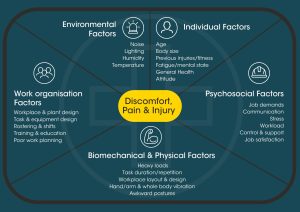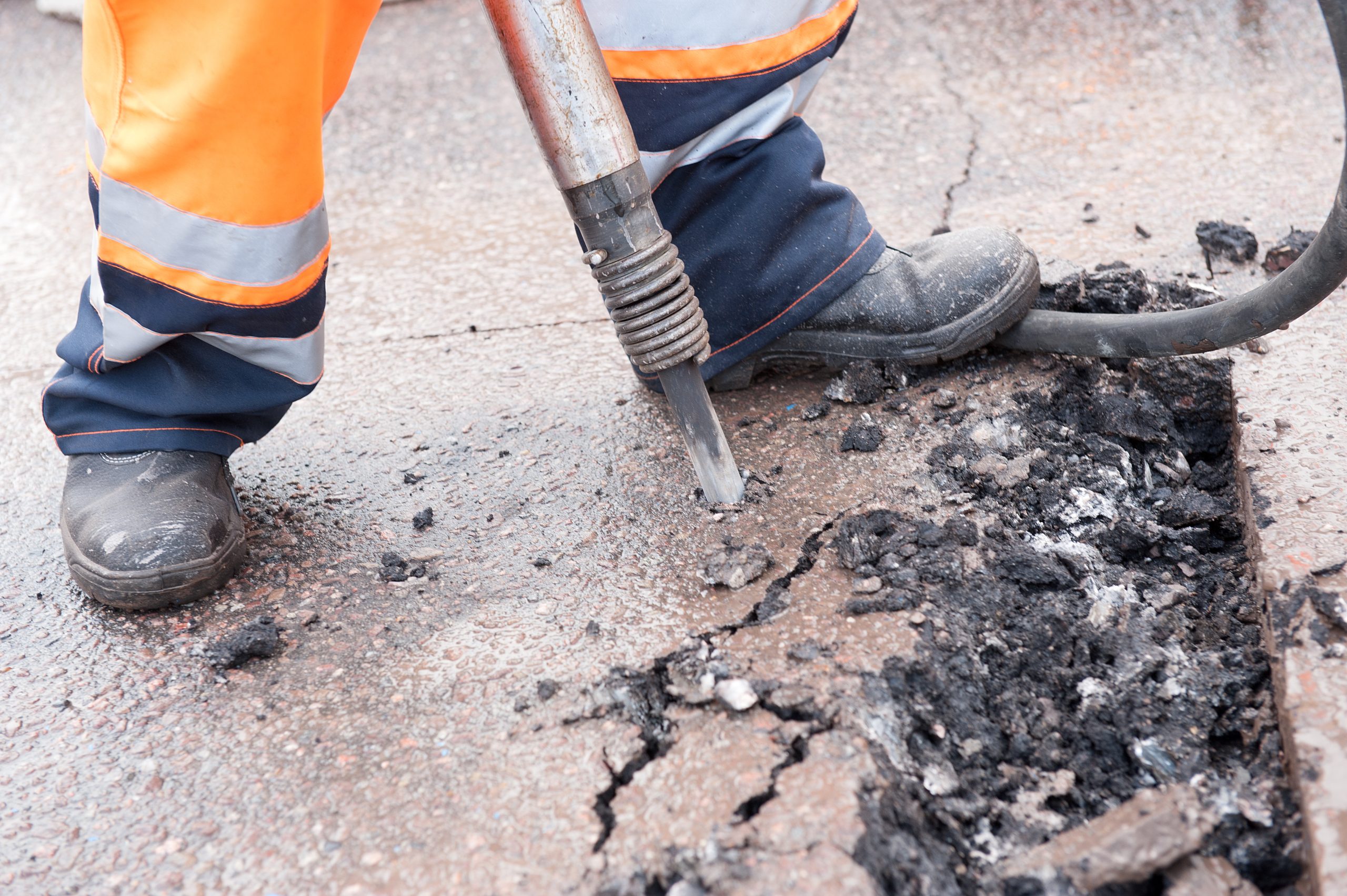Lithium batteries are common in everyday life and on the worksite, their lightweight, long life, interchangeability and quick charge benefits mean that they are now used in everything from laptops to power tools to EVs. But did you know that they pose a significant risk and need to be a part of your health and safety plan?
What’s the risk?
Lithium batteries of all sizes have the potential to overheat and catch fire. The fire is hotter, harder to put out and the smoke from these fires is incredibly toxic. Lithium batteries generally overheat if they get wet, damaged or are used with incorrect charging equipment.
Damaged batteries can explode at any time giving off flames that burn anywhere between 500 and 1000 degrees celsius. These fires are very difficult to extinguish as both water and CO2 will only suppress the fire, not extinguish it. Even if the fire has been suppressed it can still ignite again if the battery still contains energy to burn. Because of this, lithium batteries need to be properly cared for according to the manufacturer’s instructions to minimise the risk, aside from that, you need a plan in place in case of a fire.
Hot tip: The bigger the battery the bigger the risk
Ways to minimise the risk:
Safe lithium battery disposal
Never dispose of Lithium batteries in general rubbish as it can result in a fire in your bin or on the way to a transfer station, creating a risk to those transporting them. The manufacturer should be able to advise safe disposal or check out your local battery recycling centre.
Lithium batteries are going to continue playing a crucial role in our workplaces and lifestyles, so it’s necessary to recognize the potential hazards associated with them. By having awareness of these risks and good practices, we can work together to reduce the potential dangers, resulting in safer working environments where Lithium batteries are used.
If you have any questions, give the Hazardco team a call today!
Making sure your scaffolding is safe and ready for action is key. Here are the times you have to give it a good once over:
All scaffolds must be checked by a competent person before handover and scaffolds taller than 4m must be erected and inspected by someone who holds a high risk work license. Handover checks can involve completing a handover certificate and should be kept at the workplace until the scaffold is taken down. Scaffold tags are a great way to identify whether a scaffold is safe to use or not, and are used after it has been checked. Tags should be clearly displayed where workers can see as they approach the scaffold. The tags should be at every access point to the scaffold or at least at eye level on the ladders.The tag should include the following:
If there’s no tag, it might not be safe to use! Get in touch with your scaffold installer to sort it out and get it tagged.
Every 30 days a licensed scaffolder (if over 4m) or competent person (under 4m) should be checking the scaffolding to make sure it is safe. If the inspector has found any damages or non-compliant areas of the scaffold, then access needs to be stopped and the tag updated stating the scaffold is not compliant and should not be used.
A thorough inspection of your scaffolding should also be conducted after any tweaks, fixes, or wild weather. And don’t forget to keep records of all these inspections.
If you have any questions get in touch with the team at HazardCo or have a look at our other working at heights blog here
MSDs, also known as Musculoskeletal Disorders are one the most common types of work-related injury in Australia, with construction accounting for 14% percent of all serious workers’ compensation claims in 2021-2022.
Musculoskeletal pain refers to pain felt in the muscles, bones, ligaments, tendons, or nerves, and you can feel this pain in just one area of the body or throughout your whole body. The pain can range from mild, to severe enough to interfere with your day-to-day life.
There are numerous risk factors to address: Time pressure, ageing workforce, awkward postures for a start. We need to change mindsets that pain and injury are unavoidable and make our younger workforce understand the cumulative nature of these problems- something that most ‘broken´ builders will know very well
It is well known that there are a range of factors that contribute to MSDs. It’s not just about a single factor such as the lifting technique (although for industries such as scaffolding and roofing, lifting and handling techniques are an important factor).
The research firmly points to five groups of factors we need to tackle when addressing MSDs in construction as shown in the diagram below these are work organisation, environmental, individual, psychological, biomechanical and physical factors:

It may not surprise you that physical factors often take most of the blame and focus as their connection is easy to understand, measure and observe. There are also proven strategies to overcome physical factors such as machinery, equipment and task modifications. Combining the other factors into your approach is where the construction industry will get the most benefit. Understanding how these factors can combine and influence each other to cause problems will be crucial.
The most common solutions to dealing with MSD are:
We dive deeper into what treatment might look like and prevention tips, and the unseen costs associated with MSD in the blogs below:
Musculoskeletal – What treatments look like and prevention tips
Musculoskeletal: The hidden costs to workers lives and businesses.
5 things you can do to tackle musculoskeletal problems (MSDs) in your business
SafeWork NSW and WorkSafe Queensland offer a simple program called PErforM, which helps workplaces effectively manage hazardous manual tasks and reduce musculoskeletal disorders. You can contact advisory@hazardco.com for further details.
Hazardous substances are chemicals or substances which can be toxic, corrosive and can cause harm. So it makes sense that we document what’s on-site and how much we have.
If you have hazardous substances on-site, there are legal requirements you need to follow to ensure they are stored, used, and disposed of correctly to reduce the risk to anyone that uses or comes into contact with them.
There are a number of chemical specific hazards that could potentially be present on a building site but these are the most likely ones that you will come across:
These are some of the hazards that can occur from hazardous substances
Remember to check the SDS (Safety Data Sheet) for your specific chemical when addressing the hazards it might present.
To capture what hazardous substances you are using you must by law have a hazardous substance register along with the relevant safety data sheet (SDS).
This is a list of all your hazardous substances (including hazardous waste) that is used, handled, or stored at any of your sites or workplaces. Having a register will ensure you know the substances you have on-site, the requirements you need-to-know, and what to do in case of an emergency.
Keeping your register in a central location on your site means that in case of an emergency, it can be accessed quickly by anyone who needs it. There are some key bits of information that need to be included on your hazardous substance registers. Not only do you need the information below, but you must also make sure that the register is up to date and available on-site.
Because the register represents the maximum amount of the substance held, it means it’s not going to be a daily task to keep it up-to-date. But if the maximum quantity changes, the register needs to reflect this. We recommend that you review your register each time you make a change to ensure it’s up to date and accurate.
Creating your hazardous substance register is made much simpler with our Hazardous Substances Register, HazardCo members can access this via the HazardCo Hub in the templates section.
The purpose of a safety data sheet (SDS) is to provide key information about hazardous substances to the people who handle, use or store them or who could be exposed to them.
Remember it is the business owner’s responsibility to have an up to date SDS for each hazardous substance and that their workers have access to it. You can ask your supplier for a copy of the SDS when you place an order or on the product website. The SDS should be less than 5 years old.
If you need a hand getting started or would like more information, get in touch with the friendly HazardCo team today – we’re always happy to help.










